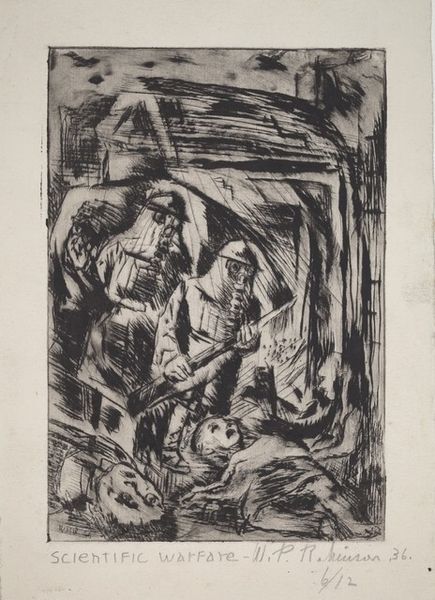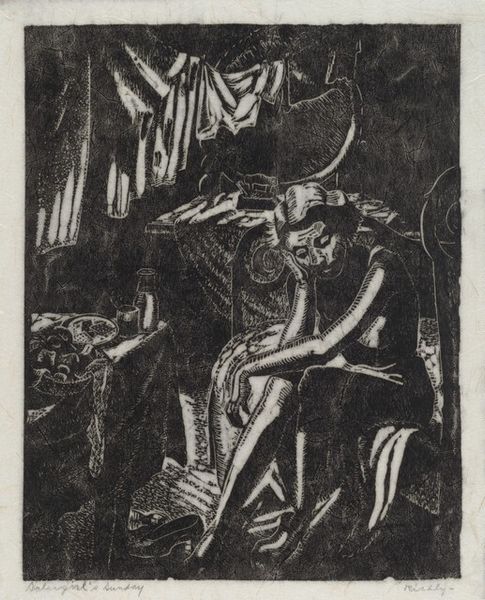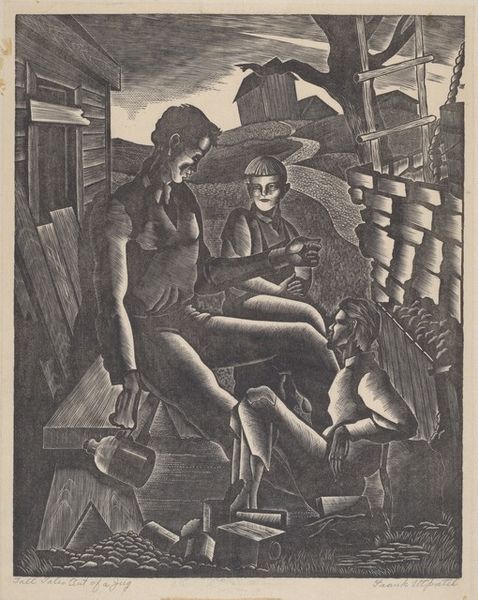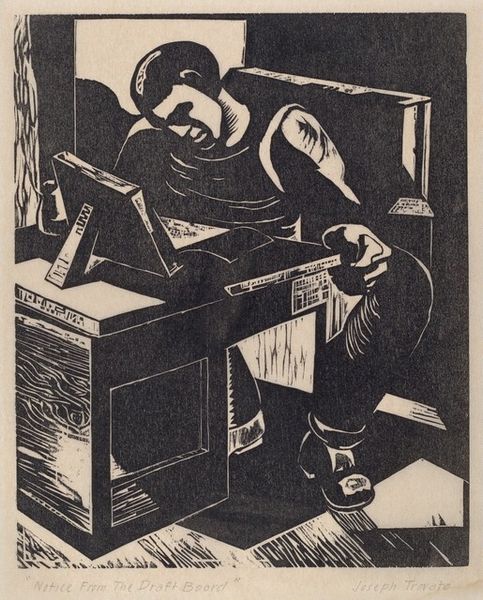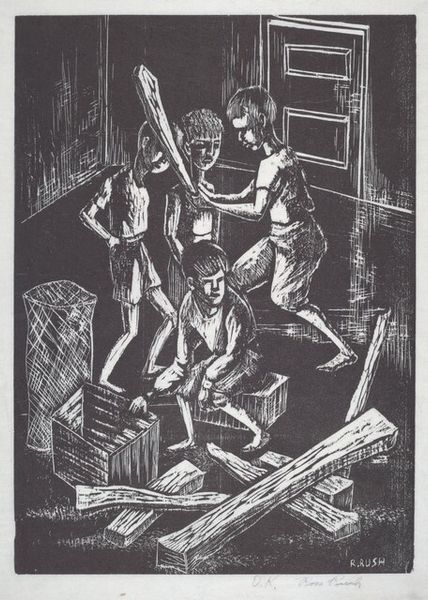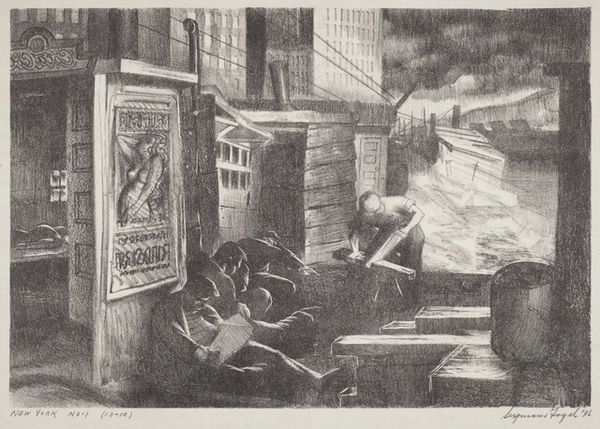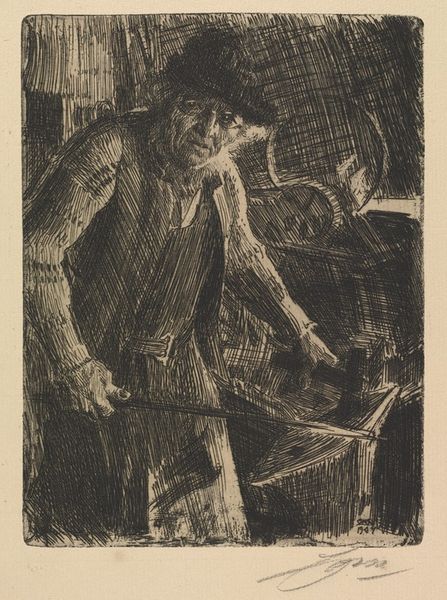
drawing, print, woodcut
#
portrait
#
drawing
# print
#
figuration
#
expressionism
#
woodcut
#
genre-painting
Copyright: National Gallery of Art: CC0 1.0
Curator: Here we have Solomon Judovin’s 1926 woodcut, titled "Shoemaker". It's a striking example of his work exploring everyday life through the lens of Expressionism. Editor: My immediate impression is one of quiet intensity. The high contrast and stark lines really draw you into the shoemaker's concentrated gaze. The textures in the room create a very tactile feel, despite being a print. Curator: Judovin, part of the vibrant Yiddish cultural scene, often depicted Jewish artisans and tradespeople. The woodcut as a medium became really popular for its accessible, democratic appeal, offering ways to spread socially conscious themes. Editor: Absolutely. The choice of a woodcut here is brilliant. It lends a rough, almost folk-art quality to the image, which aligns so well with the subject matter. And notice the lamp hanging above. Light often carries deep spiritual meanings, perhaps referring to knowledge and dedication. The window, with the implied open landscape, reminds one that while the world exists outside this cramped place, it exists as an alternative and contrast to his reality. Curator: Right. Consider how Judovin used the urban scene, framed through the window, as a tool for suggesting broader social connections in an increasingly mechanized world that threatened the existence of Jewish artisanal traditions. This connects the personal struggles to wider cultural concerns of that moment. The contrast here creates the dialectic between traditional craftsmanship and the external changes. Editor: Yes, and beyond a documentation of social changes, I see symbols of enduring resilience. The tools scattered on the desk, for instance, act not just as implements but as almost totemic objects. They represent centuries of skill, family legacy, and a kind of quiet resistance to cultural erasure. Also, note the flying bird silhouette through the window! Birds often appear as symbols of freedom or messages of higher nature, and in combination to a gridded window structure here it may point to spiritual yearning or escape through craft itself. Curator: And the Expressionistic style intensifies those emotional qualities, transforming a simple genre scene into a statement about cultural identity. Judovin brings visibility to Jewish contribution to material life at a very precarious period in history. Editor: Reflecting on the symbols now I can more fully appreciate the personal weight within this scene, the dignity of labor, but also this delicate sense of longing and resistance made ever more present in the sharp lines of the cut wood itself.
Comments
No comments
Be the first to comment and join the conversation on the ultimate creative platform.







